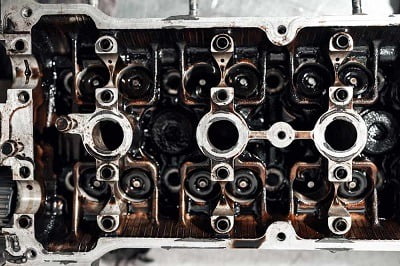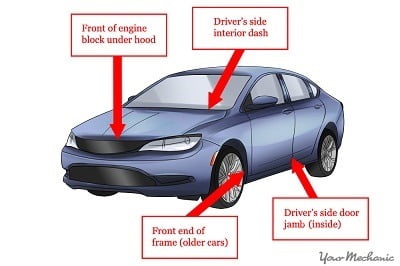
Normally it is important you take a professional mechanic along with you to inspect a used car before buying it with the aim of using it for uber or bolt
But in the case where you find yourself in an urgent negotiation, there are a few tips I will be sharing in this article that will guide you, so you won’t make the terrible mistake of buying nearly dead cars.
These inspection tips are applicable to both foreign and Nigerian used cars.
Please pay attention to all the details especially if you intend to use the car for Taxify, bolt, or uber
1. The body of the car
Firstly the look of the car is very important.
when checking the body of the car, there are things to look out for such as; scratches and dents on the car.
The deepness of the dent is very important to look out for as it should be a criterion to beat the price down only if it is something that can be amended.
2. The trims of the cars, doors, and side mirrors

Make sure the trims look well ok and the doors when being closed sound well not like it has passed through the arms of an accident.
Check the side mirrors and the bumper. When you notice that any of these are not in place confirm the price online because they might look little but are very costly.
3. Interiors of the car
Check the interior of the cars, and make sure the seats look good and the other parts of the interior don’t look bad.
And most importantly on top of the dashboard looks neat.
4. The trunk

Check the trunk if there is a spare tire, jack, wheel spinner, fire extinguisher (this might always be missing), and other related tools. Excluding shoes, please!
You will also have to check out for holes and rust in the trunk. If you find any holes they must be urgently fixed because if it expands it means more expenses.
5 Under the Car
You will have to check under the car, most importantly the exhaust pipe.
Look out for holes, rust on other parts, and oil leakage.
In case you notice drops of oil, is not a good sign and the source must be diagnosed and fixed immediately.
6. Check Your suspension

You do this by pressing the top of the car from the tire spot, if the car bounces back it means the suspension is fine.
But if you hear a sound instead, it means there is a fault with that particular suspension.
7. The Engine

In the act of inspecting the engine of a car, there are several detailed things to carefully look out for. Because a fault in the engine is as good as not having a car at all.
The first thing to check out is if there is any leaking oil anywhere.
if the engine leaks oil, go online and inquire how much it will cost to fix it on that particular car model and consider the cost during the negotiation “if you are still interested”.
The next thing is to open the engine cap, and look out for sludge inside the engine and even on the opened cap.
Sludge is mostly caused by oil spillage.
Check the engine oil deep stick: What you look out for here is to check if the oil that is on the stick is pure engine oil not mixed with water or coolant or whatever, just pure oil!
Also smell it, if it smells of fuel is a bad sign as that may be a result of a blown head gasket.
Check out the radiator (the coolant): Check if it is mixed with oil because it must be pure water.
Check the power steering oil pump: Look if it is up to gauge and not mixed with coolant.
Check the brake oil: What you basically looking out for here is neatness.
Check the battery: check if the indicator on the battery is green. If it is green it means good condition.
Check the wiring: Look out for cut and adjusted wire. Make sure none of the wire is burnt or has a sign of being burnt not even a little.
If you notice the wires have been taped it means it has been worked on and that should give you more bargaining power.
When you are done with all that engine inspection, the next thing to do is to start the engine.
8. Start the Engine

You will have to start by putting the key on, but not on “start”.
Check the dashboard and make sure all the lights are on; the oil light, the check engine light, the battery light, the hand brake light, the seat belt light, and the door light.
If all lights are on, it means the brain box of the car is active.
Also, check the mileage of the car.
Next is to start the car; When the car starts three lights on the dashboard will go off; the battery light, the check engine light, and the oil light will also go off.
When you shut the door, the door light will go off.
When you put on the seat belt, the seat belt light will go off.
And when you take off the hand brake, the hand brake light goes off.
This means that the engine control unit (ECU) is working perfectly well.
The next thing to do is to come out of the car and check the exhaust pipe; confirm if the smoke is like water vapor. You can even put your palm to block the pipe and remove it just to be sure.
You will also have to make sure you use your palm to block the exhaust pipe and see if there is any pressure pushing your hand back. It means there is no leakage anywhere in the exhaust pipe.
9. Scan the car
If you have a scan or you can access one before going to inspect the car that can also help in confirming the electronics of the car.
And it also checks out for error codes.
But, if you don’t have a scan tool, you can simply use the previous 8 listed tools; “which happen to be the manual way of checking if cars are in good shape or not.
10. Check the Car VIN(Vehicle Identification Number)
A car’s VIN is more like the fingerprint of every human.
Each car has its own unique VIN that other cars can’t have even if it is the same company-made car.
And it is always less than 17 characters eg;

The essence of checking the Vin Number is to save you the stress of arguing with the dealer base on his information that could be all hype or lies, as you can access all information concerning the car such as
- The year the car was made
- The features and specs of the car
- How many persons have owned the car
- If the vehicle has been in any major accident
- Major repairs
- dates of previous inspections
- dates of services
- Millage
- Identify open recalls
- And other valuable histories of the car

The car’s VIN can be found in any of these places in the car.
- On the driver side’s Dashboard
- front of the engine block
- front of the frame
- Underneath the spare tire in the truck
- Driver-side door
- underneath the wheel
- call the car dealer or manufacturer
- Check the car’s papers.
If the VIN is found, the next thing to do is to head to google and search for: “check my car VIN number”.
Various results will come up, just click on any that you are ok with, insert your VIN in the required space and all the information you seek will pop up without delay.
Cab article series
- Cab Taxi Business in Nigeria: Make over 300k monthly from Uber or Bolt
- 9 steps that will get you 5 stars rating in Uber/Bolt
- SECRETS Experienced Bolt / Uber Drivers don’t want you to know
- 5 Cheap Affordable cars you can use for Uber and Bolt: N700,000 to N3,000,000
- This is why Bolt, Uber DRIVERS ACCOUNT gets Blocked
Conclusion
I hope you enjoyed this article: “10 ways to INSPECT A USED Vehicle in 10 minutes before buying it for Uber or Bolt”.
Do you have a question or contribution? leave it in the comments section below.
Be a Lifter by sharing this article as it could be of help to someone close to you
Remember to use the subscribe button (email or Bell-shaped) as more articles drops.






Hello, I enjoy reading all of your article post.
I like to write a little comment to support you.
Your ides has expounded my brain
I could now know how to run this check.
We are happy we could help